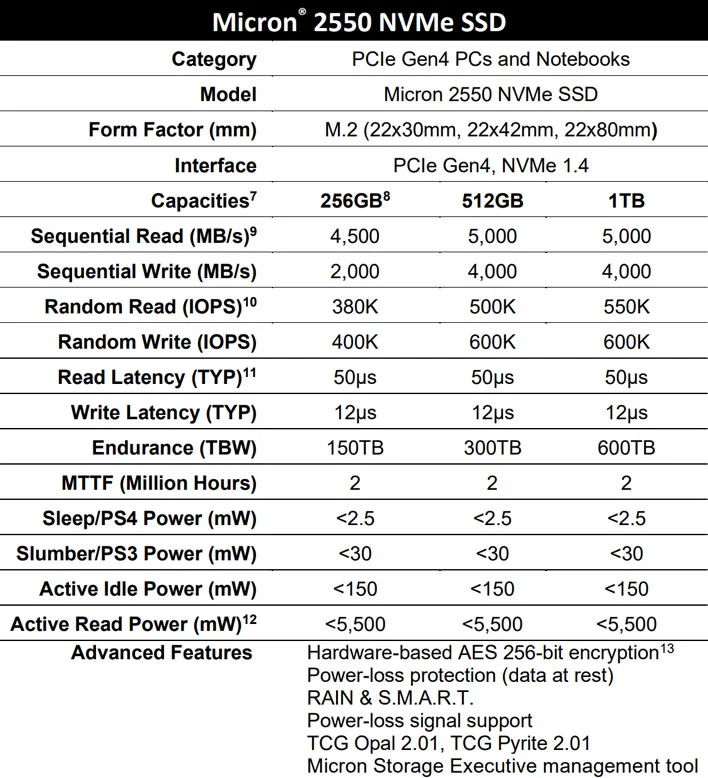Micron declared that it will be shipping the first customer SSD worldwide to use NAND memory with more than 200 layers. According to Micron, buyers may expect density and power improvements because of the 232-layer TLC NAND used in their 2550 NVMe SSD.
Micron’s 2550 SSD supports sequential read speeds of up to 5.0 GB/s and sequential write speeds of up to 4.0 GB/s. Random readings are rated at a maximum of 550K IOPS, while random writes are rated at 600K IOPS. This is good PCIe Gen4 performance, while faster drives may reach speeds of 7 GB/s and higher. Target markets for the Micron 2550 SSD include mainstream PC gaming, consumer, and business-class systems.
“We focused on delivering a superior user experience for PC users with this SSD,” said Praveen Vaidyanathan, general manager and vice president of the Client Storage Group at Micron. “The new 2550 SSD builds on our established and broadly adopted PCIe Gen4 architecture. It also incorporates Micron’s industry-leading 232-layer NAND and focuses on thermal architecture and power design. These capabilities deliver impressive application performance and phenomenal power savings.”
Micron claims that the 2550 SSD consumes only 2.5 milliwatts while sleeping, with idle power usage remaining under 150 milliwatts. Power consumption under load can exceed 5.5 watts, which is normal for NVMe SSDs. Because drives spend most of their time inactive, such advancements are nevertheless expected to have a noticeable impact on the battery life of laptops or convertible tablets that may include the drives.
The Micron 2550 SSD foregoes a DRAM cache in favor of Host Memory Buffer technology to significantly minimize power consumption. HMB transfers I/O caching responsibilities to system memory only in very modest quantities. Consequently, it should not negatively influence system performance while still speeding up most read/write activities. In addition to the HMB, an SLC cache space is also provided. Micron uses Predictive Cache Optimization to keep the most active data as close to the disc as feasible.
“We expect PCIe Gen4 drives will remain the primary interface for notebooks and desktops into 2026,” said Greg Wong, principal analyst at Forward Insights. “Leading-edge Gen4 SSDs, such as the new Micron 2550, deliver improved user experiences and provide OEMs with an attractive storage solution for their system designs.”
Along with the release, Micron offered some real-world benchmark statistics. Micron claimed that the 2550 SSD “transfers data 112% quicker, runs office productivity apps up to 67% faster, loads significant games up to 57% faster, and runs content creation applications up to 78% faster than similar competitive devices” when tested with PCMark 10.
Micron 2550 SSDs are being offered to OEMs for inclusion in their products. It will be offered in 2280, 2242, and 2230 form factors to accommodate a variety of designs. The drive will be available in three capacities: 256GB, 512GB, and 1TB. The 512GB and 1TB variants maintain comparable performance, with the 512GB model’s random read rating lowered by 50K IOPS.
The 256GB model has a higher performance impact, typical of lesser-capacity drives. Micron predicts that greater capacity 232-layer SSDs will be available in QLC-equipped variants next year.
Via Hot Hardware




